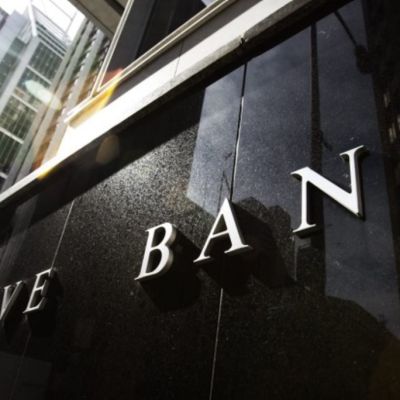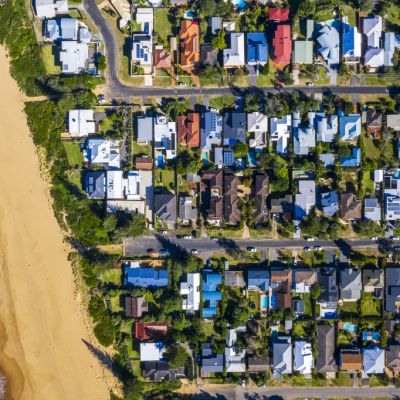July 2023 interest rate decision: Home owner reprieve as rates hold at 4.1 per cent
The dramatic drop in annual inflation and the resultant bounce in the share market has helped persuade the Reserve Bank of Australia (RBA) to keep the cash rate on hold at 4.1 per cent in only its second pause since May 2022.
In a decision welcomed by an increasing number of mortgage-holders, RBA governor Philip Lowe saw the fall in annual inflation from 6.8 per cent in April to 5.6 per cent in May as a reason to adopt a “wait and see” stance to allow the impact of the 12 earlier hikes to filter through the economy.
The decision at the bank’s monthly meeting on Tuesday (July 4) came as a surprise to many observers.
“That was an incredible drop in inflation, but when you look at the figures more closely and take away the volatile items like holiday travel and fuel, the core, seasonally-adjusted rate fell only from 6.5 per cent to 6.4 per cent, which was barely a drop at all,” said ANZ senior economist Adelaide Timbrell.
WHAT ARE YOUR MONTHLY HOME LOAN REPAYMENTS? |
||||
| Loan amount | 6.25% | 6.50% | 7% | 7.25% |
| $500,000 | $3,079 | $3,160 | $3,327 | $3,411 |
| $600,000 | $3,694 | $3,792 | $3,992 | $4,093 |
| $800,000 | $4,926 | $5,057 | $5,322 | $5,457 |
| $1 million | $6,157 | $6,321 | $6,653 | $6,822 |
“The next much more important quarterly inflation data comes out during July. So, even though the monthly fall was an encouraging sign, it’s still far too high and there will be more rate increases in the pipeline. Even if there isn’t an increase in August, there will be another one, at least, before the end of the year.”
She believes that while employment growth continues to be strong, with 432,000 job vacancies reported by the Australian Bureau of Statistics (ABS) last week, and population growth at around 2 per cent, a recession, with the current hold on the interest rate, now looks even less likely.
“All the economic indicators are very strong,” she said. “There is a strain on mortgage-holders but it’s important to remember that there were more people behind with their mortgage payments before the rate started rising in May 2022, than there are now. There will be pain when the rate rises again, and some will have to adjust their lifestyles, but many will have cash to tide them over, savings, redraw facilities and offset accounts.”
 The Reserve Bank’s latest forecasts show interest rate rises are working, but there’s one key uncertainty
The Reserve Bank’s latest forecasts show interest rate rises are working, but there’s one key uncertainty Why the optimum window to refinance could be closing (and what to do about it)
Why the optimum window to refinance could be closing (and what to do about it) Homes under $750k within walking distance of the city: The cheapest suburbs within 2km of the CBD
Homes under $750k within walking distance of the city: The cheapest suburbs within 2km of the CBD Prices are rising again. Are we just at the bottom of the market, or the beginning of another boom?
Prices are rising again. Are we just at the bottom of the market, or the beginning of another boom?
On the plus side, wages are starting to increase, too, advises Domain Home Loans chief executive Kareene Koh. In addition, a number of banks are reviewing the serviceability buffer of 3 per cent for those seeking to refinance.
“That’s something that will be worth exploring for anyone who’s really starting to feel the pressure of the last rate rises and who will feel the impact of the next ones when they come,” she said. “So, even if you might have been turned down for refinance by a bank three weeks ago, that may have changed now.
“The other good news is that we’re seeing strength in property prices. There were people previously concerned that their loan-to-value ratio was being compromised by falling prices but we aren’t seeing that at the moment. So, while we’re now less optimistic about when the rate will start to come down, there might still be options available for people to address their personal situations with the next rises.”
COMING OFF A FIXED RATE? WHAT YOUR NEW HOME LOAN REPAYMENTS COULD BE |
|||
| Loan amount | Monthly repayments on a fixed rate of 2% | New monthly repayments on a standard variable rate of 6.50% | Price difference per month |
| $500,000 | $1,848 | $3,160 | $1,312 |
| $600,000 | $2,218 | $3,792 | $1,574 |
| $800,000 | $2,957 | $5,057 | $2,100 |
| $1 million | $3,696 | $6,321 | $2,625 |
New housing lending rose by 4.8 per cent in May, the ABS reported on Monday, a strong number up from an upwardly revised fall in April. Building approvals also rose, up by a massive 20.6 per cent in May, driven by a large gain in multi-unit dwellings.
There have been other positive indicators too in the economy, with retail spending rising 0.7 per cent in May, the strongest result since January 2023, and up from being flat in April. Most of it was spent in cafes, restaurants and on takeaways, according to St George Economics.
This kind of spending can help inflation surge, however, which becomes another headache. “Inflation is too high and we all accept that, but the RBA has decided to accept a wait-and-see stance in the meantime,” said Sean Langcake, head of macroeconomic forecasting at BIS Oxford Economics.
“We can see inflation ramping up, partly through wages and underwhelming productivity and we’re starting to see insurance premiums go up – now by a record 14.2 per cent – and they’re often benchmarks of the Consumer Price Index. The outlook for rents is also quite bleak. We think a recession is unlikely but the detrimental impact of inflation getting out of control would probably be worse than even a recession.”

Others, however, believe that the RBA’s failure to hike up the rate this month was a mistake. Peter Tulip, chief economist for the Centre For Independent Studies, would have preferred to have seen a rate rise this month, believing that a short sharp shock now is much better than a long, lingering agony.
“I would have gone up 50 points now and then another 50 points in August,” he said. “The longer you leave it, the worst the adjustment. Better to raise the rate by more now when the economy is going well and there’s only 3.5 per cent unemployment than doing it later on in a slowing economy.
“We’ll probably see unemployment go up to 4.5 per cent or 5 per cent, which is a bad outcome, but I think it could be even higher if we delay raising rates more to stop inflation. That would only prolong the pain in the long run.”
We recommend
We thought you might like
States
Capital Cities
Capital Cities - Rentals
Popular Areas
Allhomes
More







